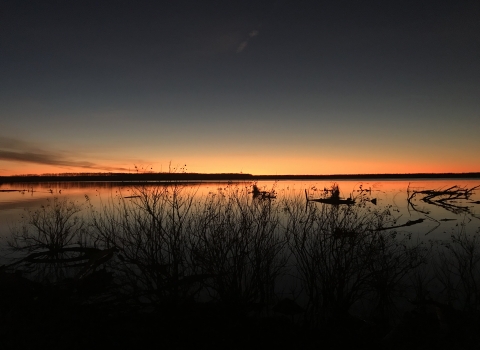The world’s largest wild goose, the giant Canada, which for over thirty years was thought to be extinct, has been rediscovered in Minnesota, according to the Department of the Interior.
The huge geese, reported to range in weight from 15 to 19 pounds, in contrast to the usual 11 pounds or less for the other larger Canada geese, were found by Dr. Harold Hanson of the Illinois Natural History Survey. Dr. Hanson, in cooperation with personnel, of the Minnesota Department of Conservation and the Fish and Wildlife Service’s Bureau of Sport Fisheries and Wildlife, trapped approximately 200 of the birds for examination and banding.
Although some of the geese in the flock were evidently of the well-known smaller types, many others were exceptionally larger birds, matching in dimensions as well as color, the supposedly extinct giant subspecies.
The flock of giant geese has been roosting on Silver Lake, which is in a park in Rochester, Minn. The lake is kept partly open by the discharge of warm water from a nearby electric generating plant. The geese range widely to feed during the day. The present nesting grounds of this giant goose are not known with certainty, but small scattered populations are believed to nest in the Dakotas, western Minnesota, and Manitoba. Their former range included a wider area in the Easter Prairie States south to Missouri. Return from birds banded this winter may shed further light on the location of the present breeding grounds.
A 22-poun world’s record goose killed in Canada in the late 1930’s was undoubtedly one of the giant subspecies. Although the giant Canada goose was well known to a past generation of hunters in the Northern Prairie States, present-day biologists considered it a myth until James Moffitt, America’s foremost student of geese was convinced of its existence. Mr. Moffitt’s death in World War II delayed the publishing of his findings. In 1951, Jean Delacour, the internationally known waterfowl authority, supported Mr. Moffitt’s finding by describing and naming the giant Canada goose after it was thought to be extinct.
Dr. Hanson is credited with discovering that the giant goose is not only still around, be even appears to have a sizable population that is adapting to man’s changes of its environment.



